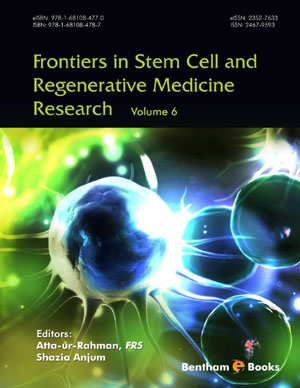Abstract
Embryonic stem cells (ESCs) possess the capability of self-renewal and pluripotency. They can propagate indefinitely and differentiate into any type of cell derived from the endoderm, mesoderm and ectoderm. This makes them ideal for basic research as well as for the development of treatments and cures for a variety of different diseases. This is especially so for developing methods to treat heart disease, where they might be used for screening cardiovascular drugs or for improving transplantation procedures in a clinical application. Thus, understanding the pathways involved in the regulation of the differentiation of ESCs into cardiomyocytes and developing efficient and reliable methods to induce differentiation, are key to the progress of cardiac research. In this chapter, the main methods currently used to induce the differentiation of ESCs into cardiomyocytes are reviewed. These include the use of embryoid body (EB)-dependent cultures, two-dimensional (2D) monolayer cultures, and the co-culture of human ESCs (and iPSCs) with mouse visceral endoderm-like stromal (END-2) cells. We also present a broad overview of the different Ca2+ signalling events that are known to occur during the differentiation of ESCs into cardiomyocytes. These include: 1) Ca2+ mobilization from the endoplasmic reticulum (ER)/sarcoplasmic reticulum (SR) mediated by inositol 1,4,5-trisphosphate receptors (IP3Rs) and ryanodine receptors (RyRs); 2) the possible involvement of cluster of differentiation 38 (CD38)/cyclic adenosine diphosphate ribose (cADPR) signalling; and 3) the influx of Ca2+ from the extracellular medium via L-type Ca2+ channels (LTCCs), store-operated Ca2+ entry (SOCE), transient receptor potential vanilloid 1 (TRPV1), and transient receptor potential canonical 3 (TRPC3) channels. Moreover, the role of the sarco/endoplasmic reticulum Ca2+-ATPase (SERCA), Na+/Ca2+ exchanger (NCX) and calreticulin in regulating cardiomyocyte differentiation by maintaining Ca2+ homeostasis is also described. Understanding how Ca2+ signalling regulates the differentiation of ESCs into cardiomyocytes might provide valuable clues for the development of efficacious treatments for cardiovascular disease.
Keywords: Ca2+ signalling, Calreticulin, Cardiomyocyte differentiation, CD38, Co-culture, Embryoid body, Embryonic stem cells, Heart disease, IP3Rs, LTCCs, Monolayer culture, NCX, Orai1, Pluripotency, RyRs, Self-renewal, SERCA, SOCE, Spontaneous beating, STIM1, Synchronous beating, TRPC3, TRPV1.


















